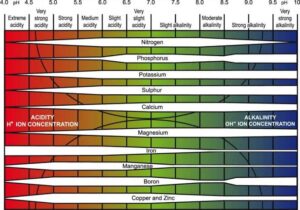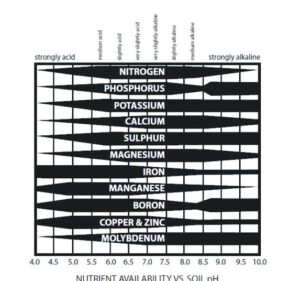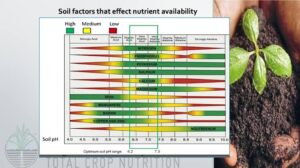Back to: Botany 300 Level
Hello, my smart Afrilearn scholar! I hope you’re doing great today! Have you ever noticed how some soils are dark and rich, while others are sandy and dry? Or why some plants grow well in one place but struggle in another? The secret lies in soil composition, pH, and nutrient availability! Today, we’ll break it down in a way that is easy, fun, and practical.
Soil composition, pH, and nutrient availability
Soil Composition: What Makes Up Soil?
Soil is more than just dirt—it’s a mixture of different materials that support plant life. These include:

Mineral Particles – These come from broken-down rocks and determine if the soil is sandy, clayey, or loamy.
Organic Matter (Humus) – This is made of decayed plants and animals. It helps the soil hold water and provides nutrients. That’s why black, humus-rich soil is great for farming!
Water – Plants absorb water from the soil to stay alive and carry nutrients. Too little water makes the soil dry, while too much water can suffocate plant roots.

Air – Roots need air to breathe! Good soil has spaces that allow oxygen to reach plant roots.
Microorganisms – Tiny bacteria, fungi, and earthworms help break down organic matter, making nutrients available for plants.
Soil pH: How Acidic or Alkaline is the Soil?
Have you ever tasted a sour orange and compared it to a bitter kola? That’s because they have different levels of acidity. Similarly, soil has different levels of acidity or alkalinity, measured by pH on a scale from 0 to 14:
Acidic Soil (pH below 7) – Found in places with heavy rainfall. Some crops like pineapple and oil palm grow well in slightly acidic soil.
Neutral Soil (pH 7) – This is the best soil for most crops. It allows plants to absorb nutrients easily.

Alkaline Soil (pH above 7) – Found in dry areas. It can limit the availability of nutrients, making it harder for plants to grow.
Farmers test soil pH before planting because an imbalance can stop plants from absorbing nutrients properly. If the soil is too acidic, they add lime to reduce acidity. If it’s too alkaline, they add organic matter like compost to balance it.
Nutrient Availability: What Plants Need to Grow
Plants need nutrients from the soil, just like we need food to stay healthy. The three most important nutrients are:
Nitrogen (N) – Helps plants grow big and green. That’s why leafy crops like spinach and vegetables need a lot of nitrogen.
Phosphorus (P) – Helps roots and flowers develop. It’s important for crops like maize and beans.
Potassium (K) – Helps plants fight diseases and produce strong stems. Bananas and tomatoes need plenty of potassium.
If the soil lacks nutrients, farmers add fertilisers to boost plant growth. Organic fertilisers like manure and compost improve the soil naturally, while chemical fertilisers provide a quick nutrient supply.
Summary
Soil is made up of mineral particles, organic matter, water, air, and microorganisms. The soil’s pH determines whether it is acidic, neutral, or alkaline, affecting plant growth. Nutrient availability is also key—plants need nitrogen, phosphorus, and potassium to grow properly. Understanding soil composition, pH, and nutrients helps farmers improve crop yield and soil health.
Evaluation
- What are the five main components of soil?
- How does soil pH affect plant growth?
- Name three essential nutrients for plant growth and their functions.
- Why do farmers add fertilisers to soil?
You are doing great! Keep learning, and soon, you’ll understand how to grow healthy crops and even improve farming in Nigeria! Keep going with Afrilearn, and see you in the next lesson!
